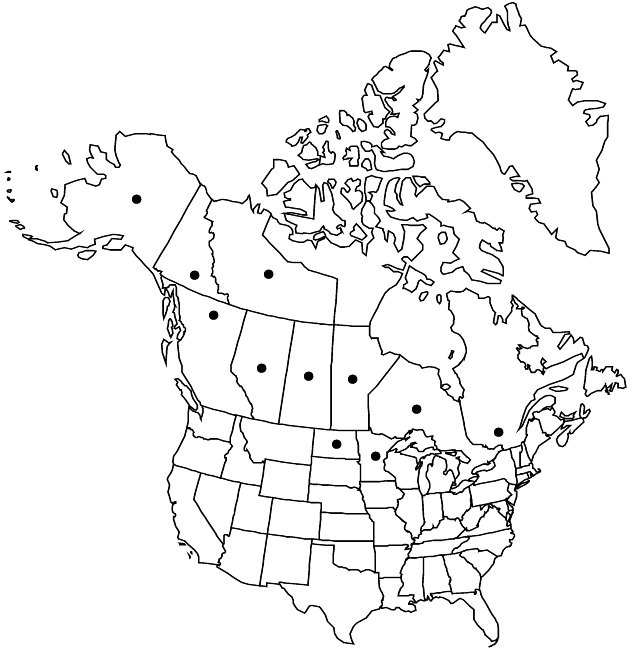Difference between revisions of "Achillea alpina"
Sp. Pl. 2: 899. 1753.
FNA>Volume Importer |
FNA>Volume Importer |
(No difference)
| |
Revision as of 18:39, 24 September 2019
Perennials, 50–80 cm (fibrous-rooted and rhizomatous). Stems 1, erect, branched or unbranched distally, sparsely villous to glabrate. Leaves sessile; blades linear-lanceolate to oblong-lanceolate, 5–10 cm × 4–8 mm, (margins serrate to doubly serrate, teeth antrorse) faces sparingly villous or glabrate. Heads 10–25+, in crowded, simple or compound, corymbiform arrays. Phyllaries 20–30 in ± 3 series, (light green, margins light to dark brown, midribs dark green or yellow-green) lanceolate to oblanceolate, faces (abaxial) sparingly tomentose. Receptacles convex; paleae oblong, 3.5–4.5 mm (apices dark, rounded). Ray florets 6–8(–12), pistillate, fertile; corollas white, laminae 1–3 × 2–3 mm. Disc florets 25–30+; corollas grayish or yellowish white, 2–3 mm. Cypselae 2.5 mm. 2n = 36.
Phenology: Flowering early Jul–early Sep.
Habitat: Meadows, forest edges, roadsides, lakeshores, along streams, moist soils
Elevation: 100–600 m
Distribution

Alta., B.C., Man., N.W.T., Ont., Que., Sask., Yukon, Alaska, Minn., N.Dak., Asia.
Discussion
Achillea alpina has been reported (as A. sibirica) as occurring in New Jersey and Missouri. Specimens examined from those states were from plants cultivated in botanical gardens; there is no evidence that Achillea alpina has escaped in those states.
Selected References
None.